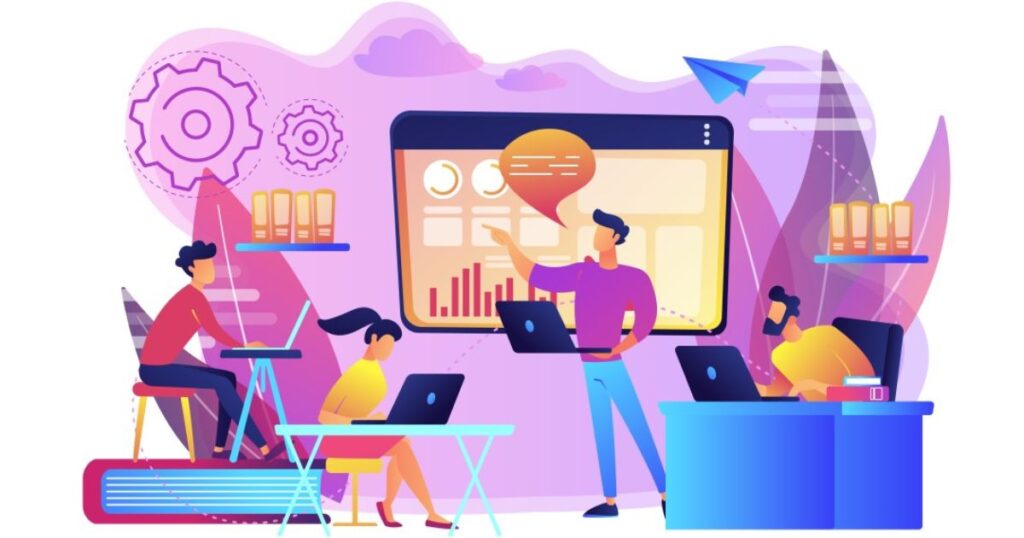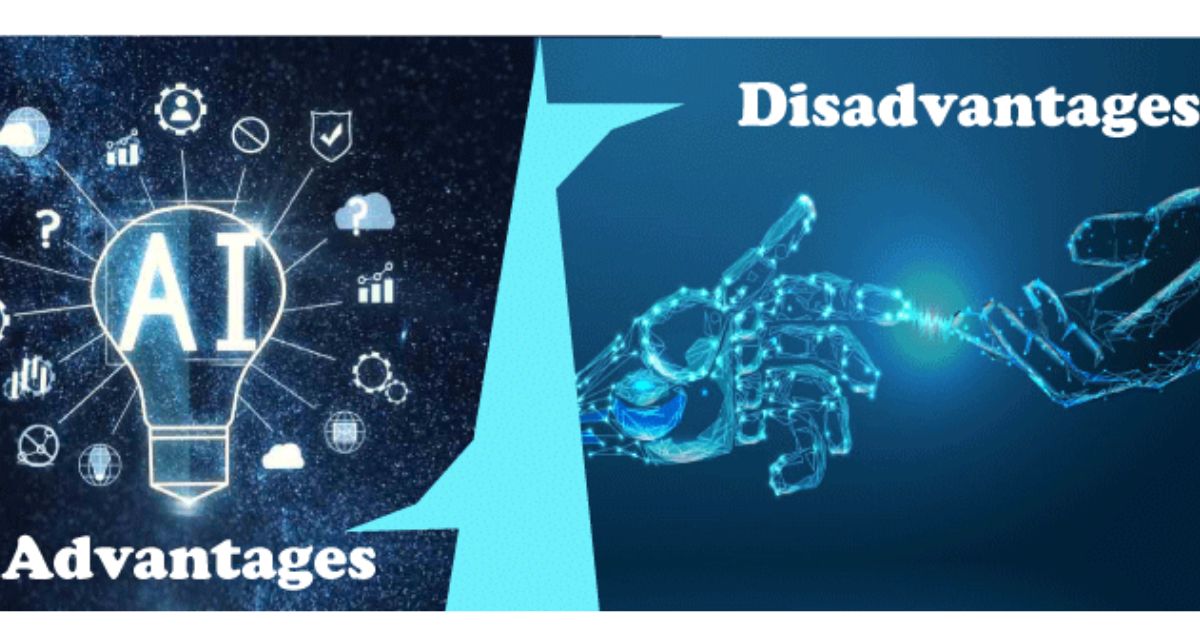Technology has become an indispensable part of our daily lives, shaping how we work, communicate and learn.From smartphones to social media platforms, technological advancements have revolutionized the way we interact with the world around us.
While technology offers countless benefits, it also brings about its fair share of challenges and drawbacks. In this article, we will explore the top 10 advantages and disadvantages of technology, shedding light on both the positive and negative impacts it has on our lives.
By understanding these pros and cons, we can navigate the digital landscape more effectively and make informed decisions about our use of technology.
What Are The 10 Advantages of Technology and Disadvantages Comparison
Technology has brought about numerous advantages to our lives, making tasks easier and communication more accessible.From improving engagement in education to enhancing communication options, the benefits of technology are vast.Along with these advantages come several drawbacks that we must consider.
While technology eases our lifestyles and fosters innovation in various fields, it also comes with concerns such as data security, social disconnect and addiction.By comparing the advantages and disadvantages of technology, we gain a better understanding of its impact on our lives and can strive to harness its benefits.While addressing its challenges effectively.
You May Like This: Movies For Dumb Charades – Action, Drama, Charades: 50 Movie Masterpieces for Game Night!”
What Are The 10 Advantages of Technology
1. Improving Engagement
Technology plays a vital role in enhancing engagement, especially in education.By integrating technology into lessons, students become more interested and involved in their studies.For example, interactive learning tools and virtual field trips make learning fun and interactive, encouraging students to participate actively in the learning process.
2. Encourages Collaboration
Technology facilitates collaboration among individuals, allowing them to work together on projects and share ideas seamlessly.Through online platforms and tools, students and professionals can collaborate irrespective of their physical locations.This fosters teamwork, communication skills and the exchange of diverse perspectives, leading to more innovative solutions and outcomes.
3. Encourage Individual Learning
With technology, learning becomes more personalized and accessible to individuals with different learning styles and abilities.Students can learn at their own pace, review difficult concepts and explore topics of interest independently.
Access to a wide range of online resources empowers learners to conduct research and deepen their understanding of various subjects on their own terms.
4. Cost Efficiency
Technology has made communication more affordable, replacing traditional methods like letters or telegrams with emails, social media and messaging apps.These digital platforms offer cost effective ways to connect with others, saving both time and money in our daily interactions.
You May Like This: Who is Darlene Gayman Jennings? Net Worth Update 2024, Age, Bio, Spouse
5. Independent Learning in Students

With access to the internet and online resources, students can pursue independent learning at their own pace.They have the freedom to explore topics of interest, conduct research and expand their knowledge beyond the confines of the classroom, fostering autonomy and self directed learning skills.
6. Allows Teachers to Teach in Exciting Ways
Modern technology empowers teachers to deliver dynamic and engaging lessons, utilizing multimedia tools, online resources and interactive activities to make learning more enjoyable.This innovative approach to teaching sparks students’ interest and encourages active participation in the learning process, creating a stimulating educational environment.
7. Ease of Access to Information
With the advent of the internet, accessing information has never been easier.From academic research to DIY tutorials, a wealth of knowledge is just a click away.Gone are the days of sifting through libraries or waiting for responses via traditional mail.Now, we can simply type a query into a search engine and instantly access a vast array of information, empowering individuals to learn and grow at their own pace.
8. Time-Saving
Technology has revolutionized the way we manage our time, streamlining tasks and maximizing efficiency.From online banking to GPS navigation, modern conveniences save us precious minutes each day.
Tasks that once required hours of effort can now be completed in a fraction of the time, allowing us to focus on more meaningful endeavors.Whether it is automating repetitive tasks or optimizing travel routes, technology helps us make the most of our time.
9. Ease of Mobility
In today’s interconnected world, mobility is key and technology has made it easier than ever to stay on the move.With smartphones and mobile apps, we can access information, communicate with others and even work from virtually anywhere.

Transportation technologies, such as ride-sharing services and GPS navigation, ensure that we can travel efficiently and reach our destinations with ease.Whether commuting to work and k and exploring new places, technology enhances our mobility and enriches our experiences.
10. Better Communication
Thanks to technology, communication has become more convenient and efficient.With various platforms like social media, messaging apps and video calls, staying connected with friends and family is easier than ever.
Whether it is sending a quick text or having a face to face conversation halfway across the globe, technology has revolutionized the way we communicate.
11. Better Learning Techniques
Technology has transformed the way we learn, making education more accessible and engaging.With online resources, virtual classrooms, and interactive learning tools, students can explore subjects at their own pace and access a wealth of information with just a few clicks.
Technology has bridged the gap between learners of different backgrounds, making education more inclusive and adaptable to individual needs.
12. Easily Payment Gateways:
Technology has simplified financial transactions with the advent of easily accessible payment gateways.Platforms like PayPal, Stripe and mobile banking apps allow users to make secure payments online or offline, eliminating the need for physical currency.These convenient methods have streamlined commerce, making cashless transactions effortless and efficient.
13. Benefits of Technology in Education
The incorporation of technology in education has brought numerous advantages, revolutionizing the learning experience.Online learning platforms and virtual classrooms have made education more accessible and flexible.
Students can access educational resources from anywhere with an internet connection, facilitating personalized learning experiences tailored to their needs.Technology enables interactive lessons that enhance comprehension and retention, empowering both students and educators to excel academically.
Disadvantages of Technology
1. Data Security
In today’s digital age, data security is a major concern.With the vast amounts of information stored online, there is a risk of data breaches and cyberattacks.Hackers can exploit vulnerabilities in systems to access sensitive data, leading to identity theft, financial loss and privacy violations.Protecting personal and confidential information is crucial to safeguarding individuals and organizations from potential harm.
2. Complexity
The complexity of modern technology can pose challenges for users.From navigating complex interfaces to troubleshooting technical issues, understanding and operating devices and machines can be daunting.

As technology advances, devices become more sophisticated, requiring users to adapt and learn new skills.Simplifying user interfaces and providing adequate support and guidance can help mitigate the complexities associated with technology.
3. Social Disconnect
Despite the connectivity facilitated by technology, there is a growing concern about social disconnect.Excessive reliance on digital communication can lead to a lack of meaningful face to face interactions, diminishing the quality of relationships and contributing to feelings of loneliness and isolation.It is essential to strike a balance between digital and real life interactions to foster genuine connections and maintain social well being.
4. Work Overload
In today’s digital age many individuals find themselves overwhelmed by constant connectivity and communication.The prevalence of emails, messages, and notifications can lead to a never ending stream of work related tasks, blurring the boundaries between work and personal life.
This work overload can result in increased stress and burnout, as individuals struggle to disconnect and find time for relaxation and rejuvenation.
5. Digital Media Manipulation
With the rise of digital technology, the manipulation of media has become increasingly prevalent. Photos, videos and audio recordings can be easily edited and altered, blurring the lines between reality and fiction.
This manipulation of digital media poses significant challenges, as it becomes difficult to discern what is authentic and what is fabricated. Misinformation and deception abound, undermining trust and credibility in the digital sphere.
6. Plagiarism
The ease of access to vast amounts of digital information has led to a rise in plagiarism across various fields.Students, researchers and content creators can easily copy and reproduce digital content without proper attribution or acknowledgment.
This undermines academic integrity and originality, as individuals rely on others’ work instead of creating their own.Plagiarism not only devalues the effort and creativity of original creators but also erodes trust in the integrity of academic and creative endeavors.
7.Anonymity And Fake Personas
With the rise of digital technology, individuals have the ability to hide behind fake identities and personas online.This anonymity opens the door to various forms of misconduct, including cyberbullying, trolling and scamming.
People can easily create fake profiles and engage in harmful behaviors without facing consequences, leading to distrust and uncertainty in online interactions.
8.Addiction
Technology, particularly social media and online gaming.It has become increasingly addictive for many people.The constant availability of digital platforms and the allure of endless scrolling or gaming can lead to excessive screen time and neglect of real life responsibilities.
Addiction to technology can have detrimental effects on mental health, productivity, and relationships, highlighting the need for mindful use and moderation in our digital habits.
9.Reducing Creativity
Technology, while offering convenience and efficiency, has been criticized for stifling creativity. With tasks becoming automated and information readily available at our fingertips, there is less need for innovative thinking and problem solving.

Instead of engaging in creative pursuits, individuals may rely on technology to perform tasks that once required manual effort, leading to a decline in originality and ingenuity.
Grab of Social Communication
The rise of digital communication platforms has led to a shift in how we interact with others, with many individuals favoring online interactions over face-to-face communication.This reliance on digital communication can diminish the quality of real life connections, leading to a decline in social skills and interpersonal relationships.
Excessive use of social media can contribute to feelings of isolation and disconnect from the world around us.
FAQ’s
What are the advantages of technology in transportation?
Technology has revolutionized transportation by making it more accessible, efficient and convenient.From GPS navigation systems to ride-sharing apps, technological innovations have improved mobility and connectivity for people worldwide.
What are the disadvantages of technology in the workplace?
Technology can lead to work overload, as constant connectivity blurs the boundaries between work and personal life. Additionally, reliance on digital communication platforms may hinder interpersonal relationships and contribute to feelings of stress and burnout among employees.
How does technology impact creativity?
While technology offers convenience and efficiency, it can also diminish creativity by automating tasks that previously required manual effort and critical thinking.Over reliance on digital tools may discourage independent thinking and originality in problem solving.
Final Thought
While technology offers numerous advantages such as improved education engagement, enhanced communication and efficiency in various aspects of life, it also comes with its share of challenges.From concerns about data security and social disconnect to the potential impact on creativity and addiction, it is essential to approach technology with mindfulness and awareness.
By acknowledging both the benefits and drawbacks of technology, individuals and organizations can make informed decisions to harness its potential while mitigating its negative effects. Striking a balance between embracing technological advancements and maintaining human connections is key to navigating the digital age successfully.












